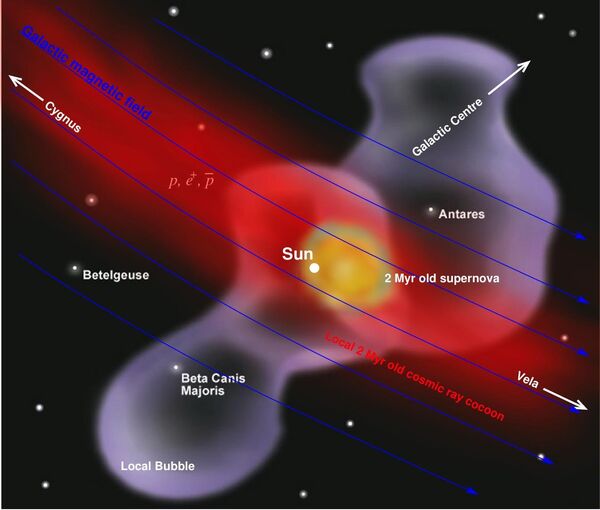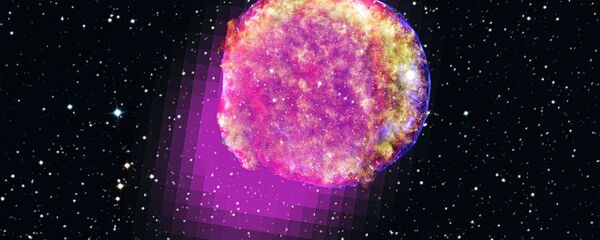A number of experiments in recent years have revealed anomalies in CR spectra, specifically high antimatter fluxes (positrons and antiprotons) and a shift in the ratio of proton and helium flux subject to their energy (which should not occur in a single CR source). Anomalies have also been identified in CR anisotropy (irregular properties).
Scientists have proposed numerous models explaining some of these anomalies in isolation. An international team of astrophysicists from Russia, France, and Switzerland has suggested a theory explaining all the CR anomalies identified to date.
READ MORE: Ancient Rock Art Found in India Could Be Oldest Depiction of Supernova
"The supernova explosion occurred about two or three million years ago within 220-450 light years of the Solar System (a distance exceeding by 50-100 times that to Proxima Centauri, the star closest to the Sun)," a team member, MEPhI Professor Dmitry Semikoz, told Sputnik (for an overview of the theory, See: Physical Review D 97, 063011 (2018.)

He said that recent explorations of Earth's crust on the ocean floor and lunar soil studies have proved without a doubt that a supernova exploded near the Solar System some 2 million years ago, as indicated by the finding of 60Fe isotopes that are formed only by supernovas.
"If the event we have described happens again, the Earth will be in for global climatic changes and much higher radiation levels. If, however, a supernova explodes within a 10 times shorter distance, the consequences for biota on our planet will be disastrous," he said.
"Some or all life on Earth would be wiped out depending on the distance to the supernova," he added.
READ MORE: Gotcha! Amateur Astronomer Captures Exact Moment Of Supernova Explosion
Luckily, events of this sort are extremely rare. Supernovas occur once every several million years within hundreds of parsecs from the Earth, while really dangerous supernovas, those occurring within 10 parsecs, occur once every several billion years.
Dmitry Semikoz and his US and European colleagues have already shown that cosmic ray "attacks" on Earth resulting from supernova explosions within 300-600 light years approximately 3.2 and 8.7 million years ago should have wreaked havoc with the biological clocks of animals and accelerated biological evolution on the planet due to the dramatic surge in the number of mutations caused by radiation.





